The ground beneath the wide, expansive branches of a magnolia tree provides a shaded and sheltered area from the harsh sunlight.
This serene shade beneath the large magnolia provides an opportunity for many garden enthusiasts to introduce a variety of plants. Yet, those who would like to plant under a magnolia must be cautious.
While a magnolia tree is an exquisite focal point in the landscape, it presents certain challenges for its companion plants.
Key Takeaways
- Underplanting beneath a magnolia tree requires careful consideration due to allelopathy, dense shade, and shallow roots.
- A combination of bulbs, perennials, and ground covers can thrive under these conditions, offering varying heights, textures, and colors.
- Native plants, like the cardinal flower and trillium, can bring local ecology benefits and attract beneficial wildlife.
- The space beneath a magnolia can be transformed into a vibrant garden oasis with thoughtful planning and suitable plant choices.
Chances are good that you have tons of questions and concerns regarding your magnolia tree. I address them all in my comprehensive guide, Magnolia Tree Questions. Don’t miss it!
Words of Caution
When deciding to integrate additional plants beneath the canopy of a magnolia tree, it’s essential to be aware of the unique challenges this specific landscape presents.
Magnolias, while majestic and captivating in their beauty, are not the easiest trees under which to establish companion plants.
1. Allelopathy
One significant concern when considering what to plant under a magnolia tree is the phenomenon of allelopathy.
Magnolias, like some other tree species, release substances from their roots, leaves, and twigs that can inhibit the growth of surrounding plants.
This natural mechanism protects the magnolia’s domain, ensuring it faces reduced competition for vital nutrients and water in the soil.
While this is beneficial for the magnolia, it can be detrimental to plants that are sensitive to these substances.
Before deciding on what to plant, ensure that your chosen species is tolerant to allelopathic effects, or consider improving soil health through organic composts that might mitigate these effects.
My advice? Try just a couple of inexpensive plants first and see how they do. If they thrive, then try adding a few other options. If they fail (and they might!), at least you haven’t lost anything valuable.
2. Dense Shade
Magnolias, especially mature specimens, cast a dense shade with their large, expansive branches. This dense canopy can prove challenging for plants that thrive in full sun or even partial shade.
The reduced sunlight means that photosynthesis, an essential process for all plants, can be limited.
Therefore, plants beneath the magnolia tree need to be those that naturally thrive in lower light conditions or are adaptable to such environments.
It is also worth considering pruning the lower branches of the magnolia if the shade is too dense, but this would depend on your aesthetic preferences and the health of the tree.
3. Shallow Roots That Do Not Like Disturbances
The magnolia tree’s root system tends to rise to the soil surface, creating a shallow network that can cover a considerable area.
These roots are not just expansive; they’re also sensitive. Magnolias do not appreciate disturbances around their root zone.
Because of this, any gardening activity, such as digging or planting, can stress the tree and potentially harm its health.
When introducing new plants to grow underneath a magnolia, it’s crucial to take care when digging and, if possible, choose plants that require minimal soil disturbance, such as those that can be planted from small pots or bulbs.
1. Hosta

Hostas are a gardener’s delight when it comes to shade-loving plants, making them ideal for the shady landscape beneath a magnolia tree.
These perennial plants thrive in partial shade, producing lush, green, and sometimes variegated leaves.
Their robust nature enables them to tolerate the dense shade provided by large magnolia branches. In early spring, the hosta can also produce exquisite, fragrant blossoms.
When planting several hostas, ensure that you do so away from the trunk of the magnolia to avoid disturbing the tree’s shallow roots.
A bonus? They’re deer-resistant, meaning they’ll remain untouched in many North American backyards.
2. Common Lady Fern

A delicate beauty, the common lady fern can transform the area beneath your magnolia tree into a woodland wonder.
Ferns are an ancient species, and this variety is no exception when it comes to hardiness.
With its feathery, green fronds, it’s a good option that can thrive in the damp soil often found underneath the magnolia canopy.
Lady ferns don’t need full sun, and they gracefully fill the understory, creating a dense ground cover that’s both functional and attractive.
3. Hellebore

Also known as the “winter rose” or “Christmas rose,” hellebores bring a touch of early color to your garden, often blooming when snow still blankets the ground.
They’re an evergreen perennial, ensuring that the area beneath your magnolia won’t be left bare even in winter.
While they blossom in a variety of shades from whites to deep purples, their unique saucer-shaped flowers are a sight to behold.
Hellebores thrive in full to partial shade, making them suitable companions for your magnolia tree. However, they’d also grow well further away from the trunk, ensuring minimal root disturbance.
4. Periwinkle

Periwinkle, with its trailing stems and radiant blue flowers, acts as a beautiful ground cover under deciduous trees like magnolias.
Their ability to produce a carpet of blooms in the spring is unparalleled.
As a robust plant, periwinkle can establish itself even in the tricky conditions under a magnolia tree, benefiting from the dense, cool shade provided.
Remember to keep them moist, especially during the first year, to ensure they establish themselves well beneath the canopy.
5. Solomon’s Seal

A native to North America, Solomon’s seal is prized for its arching stems and white, bell-shaped flowers.
During the early spring, the plant brings a touch of elegance to the garden with its blossoms hanging delicately beneath its leaves.
Solomon’s seal is a shade-loving perennial, making it a perfect fit for planting under a magnolia. The Lady Bird Johnson Wildflower Center even recognizes its beauty and adaptability.
With a backdrop of magnolia flowers in full bloom, Solomon’s seal adds depth and variety to the garden.
6. Wild Ginger

Wild ginger, often overlooked but truly a gem, offers a low-growing, heart-shaped leafed ground cover. Its uniqueness lies in the small, fragrant, red-brown flowers that hide beneath its foliage.
Naturally occurring in the forests of North America, this plant is accustomed to thriving beneath the dense canopy of deciduous trees.
The moist conditions often found underneath the magnolia tree’s sprawling branches provide the ideal environment for wild ginger to thrive.
Interestingly, its name stems from the ginger-like aroma the roots produce when crushed.
7. Liriope

Liriope, also known as “monkey grass,” is a versatile and hardy plant suitable for a variety of landscapes.
It produces grass-like leaves and, come late summer, blooms with delicate purple or white flowers.
Given its tolerance to a range of soil types and conditions, it can hold its own under the shade of a magnolia.
In fact, it’s often used as a border plant in lawns, providing a transition between the open lawn and the shaded area underneath trees.
Liriope thrives particularly well beneath large magnolias where the soil remains consistently moist.
8. Astilbe

For those who would like to plant a burst of color beneath their magnolia tree, astilbe is an ideal choice.
With its feathery plumes available in shades ranging from soft pinks to deep reds, it introduces an element of texture and vibrancy.
Astilbe’s love for partial shade and well-draining but damp soils makes it a prime candidate to be planted under a magnolia.
It’s also a magnet for pollinators, inviting a flurry of beneficial insects to your garden.
9. Daffodil

Who can resist the sunny disposition of a daffodil? These early spring bloomers offer a cheerful sight, often signaling the end of winter.
As bulb plants, daffodils can be planted in the fall, and their deep planting depth means they are less likely to disturb the magnolia’s sensitive surface roots.
While they love sunlight, they’ll have completed most of their growth cycle by the time a deciduous magnolia’s leaves are fully out, allowing them to make the most of the available light.
The contrast of bright yellow or white daffodils against the backdrop of a magnolia in blossom can be breathtaking.
10. Snowdrops
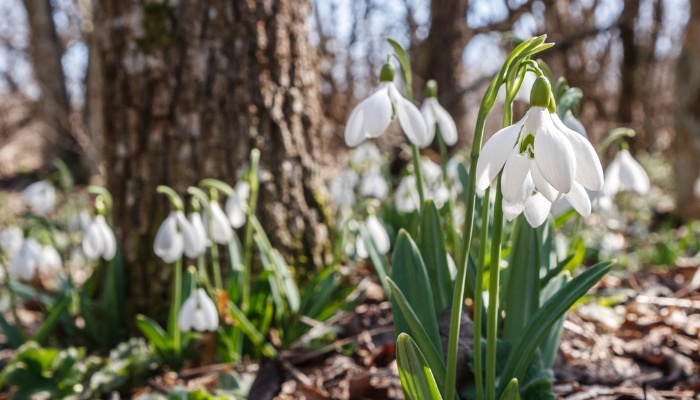
Another bulb beauty, snowdrops are often the very first signs of life in a garden after winter. Their delicate white blooms hang like droplets, often emerging even through the snow.
Given that they bloom so early, they benefit from the sun before deciduous magnolias leaf out.
Snowdrops are best planted in drifts away from the trunk of the tree, providing a carpet-like appearance in the early days of spring.
11. Crocus

Yet another harbinger of spring, the crocus is a bulb that offers a variety of colors from purples and yellows to whites.
They’re a good option for those looking for early spring colors under their magnolia tree.
Just like snowdrops and daffodils, crocuses complete most of their life cycle before the magnolia tree’s dense canopy unfurls its leaves.
This timing allows them to make the most of the sunlight that dapples through the bare branches.
12. Bluebells
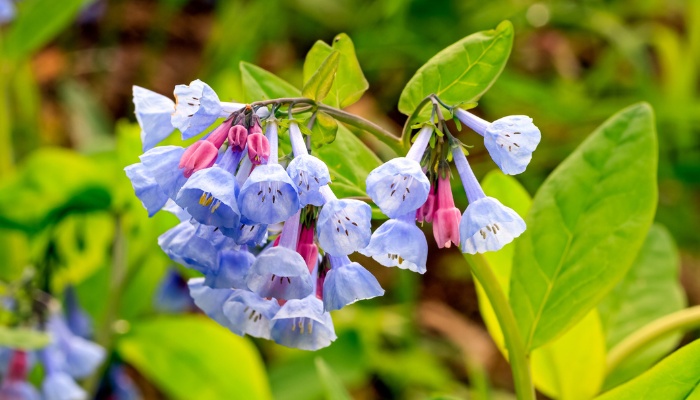
This woodland wonder, with its iconic blue bell-shaped flowers, is a sight to behold in any garden.
Bluebells can create a fairy-tale setting when planted under a magnolia, especially if they’re allowed to naturalize.
The soil under a magnolia often mimics the woodland floor, providing the rich, organic conditions bluebells love.
As with other bulbs, planting them away from the trunk will ensure less disturbance to the magnolia’s roots.
13. Hyacinths

Hyacinths are a delight, not just for the eyes but also for the nose. Their fragrant blooms can fill your garden with a sweet aroma, making springtime under your magnolia tree an olfactory celebration.
Available in a range of colors, they prefer well-draining soil and can handle the partial shade a magnolia provides.
The attractive scent of hyacinths combined with the magnolia’s own fragrance makes the area beneath the tree a haven for the senses.
14. Mints
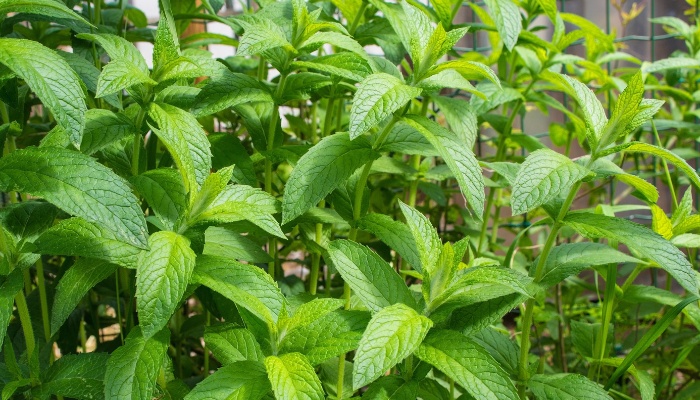
Mints aren’t just for the kitchen. These hardy, fast-growing plants can act as ground covers, filling in the spaces where other plants might struggle.
The refreshing aroma they release when brushed against is a bonus.
As mint species can be invasive, it’s best to keep them contained or plant varieties like apple mint or spearmint, which are slightly less aggressive.
The moist environment beneath the magnolia tree can be ideal for mints, but it’s essential to ensure they don’t overshadow other plants in your garden.
15. Trilliums

A native to North American woodlands, trilliums are three-petaled beauties that truly shine in the shade.
They are accustomed to the dappled sunlight of woodlands, making them suitable for the understory of a magnolia.
You’ll love their unique structure and the variety of colors they come in, from whites and yellows to deep reds.
The organic, well-draining soil often found beneath a magnolia is just what trilliums prefer.
16. Dog’s Tooth Violet
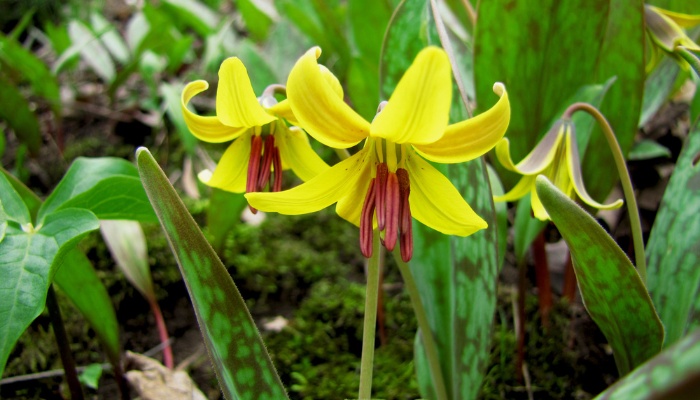
Also known as the trout lily, the dog’s tooth violet is a perennial favorite for shady spots. Its mottled leaves, reminiscent of a trout’s back, provide an interesting texture beneath the magnolia tree.
Come early spring, its delicate yellow flowers rise to the soil surface, bringing brightness to the garden.
The organic, nutrient-rich conditions often found underneath a magnolia make it an exquisite place for the dog’s tooth violet to flourish.
17. Cyclamen
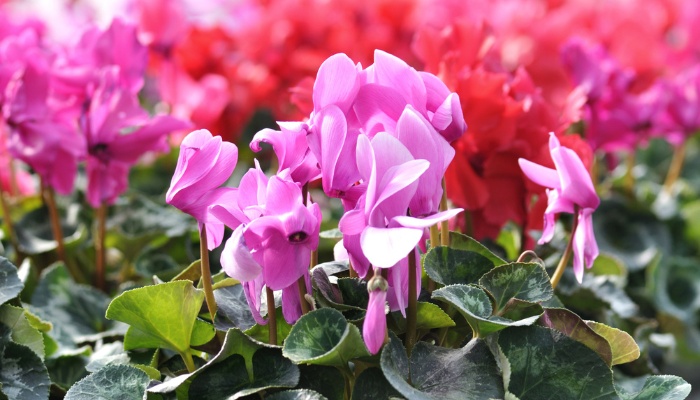
Cyclamen is a standout for its beautiful, butterfly-like blossoms and heart-shaped leaves.
These perennials are especially valuable for the late winter color they bring to the garden landscape with their blooms appearing in shades of pink, white, and deep purple.
The cyclamen’s bulbs are quite hardy and can endure beneath the dense shade of a magnolia, making them a good option for underplanting.
18. Cranesbill

Cranesbill, or wild geranium, adds a splash of color with its pink or lavender flowers. These plants are hardy and tolerate a variety of conditions, thriving especially well in partial shade.
Cranesbill is known for its resilience and its capacity to act as ground cover. Beneath the magnolia tree, it can fill in gaps, providing a consistent blanket of green dotted with colorful blooms.
19. Lady’s Mantle

This perennial is loved for its velvety, scalloped leaves that capture dew and raindrops, making them shimmer in the morning sun.
Lady’s mantle can tolerate the shade of a magnolia and prefers moist conditions.
It’s not just the foliage that stands out; its frothy, yellow-green blooms create a whimsical effect, especially when the sun’s rays filter through the magnolia’s branches.
20. Cardinal Flower

For those looking for a bold statement, the cardinal flower is hard to miss with its bright red blooms. It’s a North American native that loves damp spots and can bring a touch of the wild to your backyard.
Birds, especially hummingbirds, are attracted to its vibrant color, making your magnolia tree not just a refuge for plants but also a haven for wildlife.
When considering plants to grow beneath your magnolia, the cardinal flower stands out for its stunning visuals and its ability to attract beneficial fauna.
Conclusion
Choosing the right companion plants to grace the space under a magnolia tree can be a rewarding experience.
By understanding the unique challenges and advantages this environment presents, gardeners can craft a landscape that complements the majesty of the magnolia.
From early spring bulb plants like daffodils and crocuses to the lasting ground cover provided by plants like wild ginger and liriope, there are numerous options to enhance the aesthetic and functional appeal of your garden.
Don’t let this article be the end of your journey of discovery! Keep learning about magnolia trees by exploring these guides next:
- When Do Magnolia Trees Bloom? When To Expect Flowering
- How To Identify a Magnolia Tree: Easy Identification Guide
